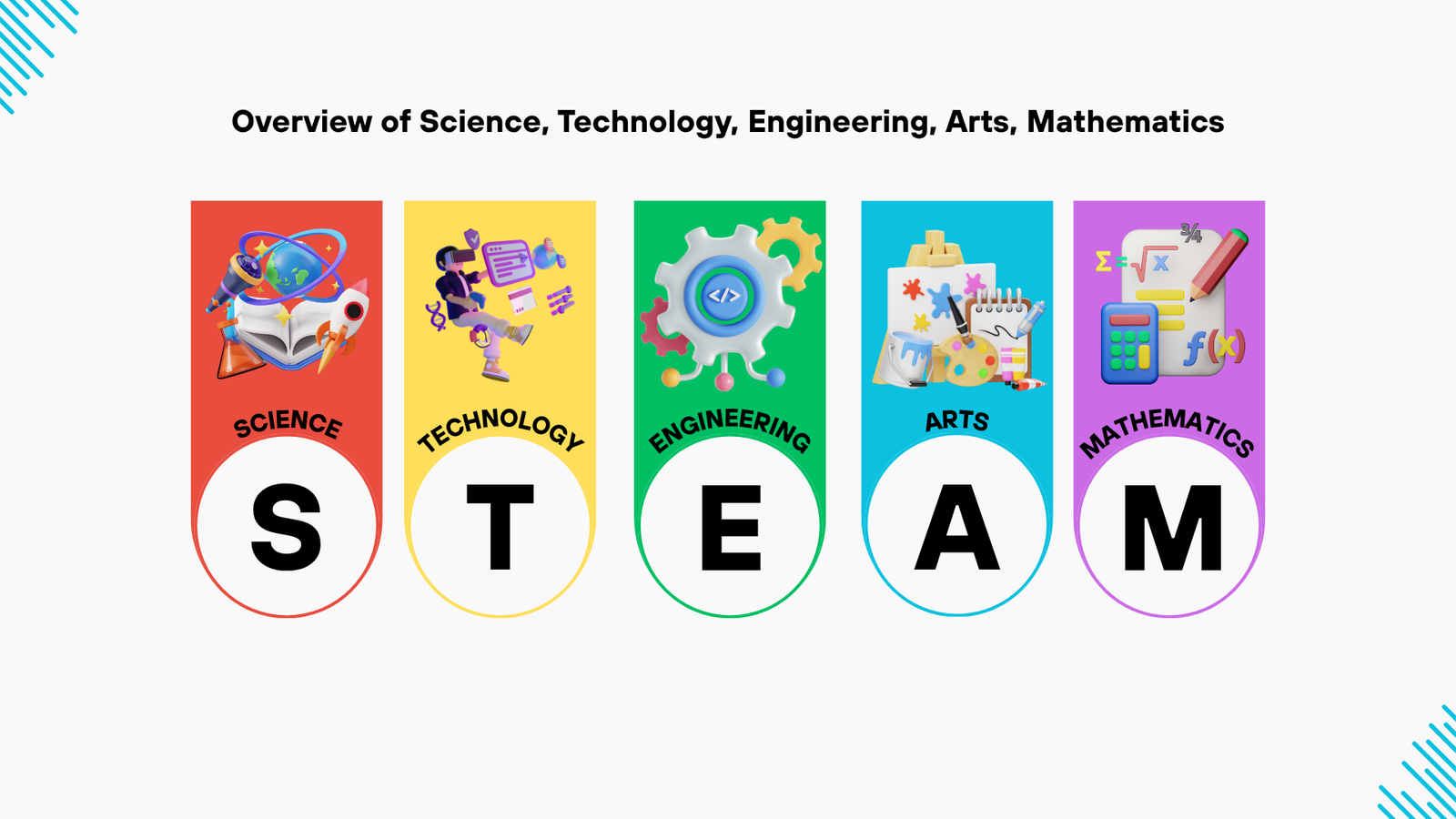Lesson 3.1: Introduction to STEAM Disciplines

In today’s dynamic world, the ability to think critically, solve real-world problems, and collaborate across disciplines is more important than ever. That’s where STEAM education comes in—an integrated learning approach that brings together five key disciplines: Science, Technology, Engineering, Arts, and Mathematics.
STEAM is not just a collection of subjects it’s a philosophy of learning that mirrors how knowledge and problem-solving work in real life. Rather than teaching each subject in isolation, STEAM emphasizes the connections between them, encouraging students to think holistically, create innovatively, and build real solutions.
What Is STEAM Disciplines?
STEAM is an educational framework that combines:
-
Science: Investigating the natural world using observation and experimentation.
-
Technology: Applying tools and systems to solve human problems.
-
Engineering: Designing and building structures, systems, and processes.
-
Arts: Integrating creativity, expression, and design thinking.
-
Mathematics: Using logic, patterns, and quantitative analysis to support decision-making.
Each component plays a crucial role in shaping learners who are innovative, analytical, and future-ready.
Breaking Down the STEAM Disciplines
1. Science – Inquiry, Discovery, and Curiosity
Science is the foundation of understanding how the universe works. In STEAM, science involves:
-
Asking questions
-
Conducting experiments
-
Analyzing results
-
Making evidence-based conclusions
Through science, students learn to observe, hypothesize, and think systematically. It builds curiosity and nurtures a mindset of discovery.
2. Technology – Tools, Systems, and Innovation
Technology is more than digital devices—it includes all the tools created to make life easier or solve problems. In STEAM, students explore:
-
How tools are used to gather data
-
Programming and digital literacy
-
Responsible and ethical technology use
Technology helps bridge the gap between scientific discovery and practical application. It enables problem-solving at scale.
3. Engineering – Designing Solutions
Engineering connects scientific principles and mathematical reasoning to design real-world solutions. Students learn:
-
How to identify problems and needs
-
Prototype and test ideas
-
Iterate and improve designs
By learning to think like engineers, students develop persistence, logical thinking, and resilience in the face of failure.
4. Arts – Expression, Empathy, and Design
The “A” in STEAM introduces a powerful element: creativity. Arts involve:
-
Visual design and aesthetics
-
Storytelling and communication
-
Empathy and emotional intelligence
The arts make STEM more accessible and human-centered. Whether designing a product or coding an app, artistic thinking ensures that innovation is not only functional but meaningful and beautiful.
5. Mathematics – Structure, Precision, and Patterns
Mathematics is the universal language of logic and precision. In STEAM, math supports:
-
Data analysis
-
Measurement and geometry
-
Modeling and prediction
Students apply math to quantify results, optimize designs, and test hypotheses. It empowers them to make accurate, informed decisions.
Why STEAM Matters in the 21st Century
The real world doesn’t separate knowledge into subject areas—and neither should education. STEAM reflects the interdisciplinary nature of today’s challenges, from climate change to artificial intelligence.
Benefits of STEAM Education:
-
Promotes Critical Thinking: Students learn how to analyze problems and develop thoughtful solutions.
-
Encourages Collaboration: Interdisciplinary projects build teamwork and communication skills.
-
Boosts Creativity and Innovation: The integration of arts allows students to approach problems with empathy and originality.
-
Prepares for Future Careers: Many future jobs will require skills across science, technology, and design.
By embracing STEAM, educators prepare students not just to succeed academically, but to lead, adapt, and create change in an increasingly complex world.
Conclusion: STEAM as a Transformative Learning Model
STEAM is more than a buzzword—it’s a transformative model of education that reflects how the world actually works. By blending science, technology, engineering, arts, and mathematics, students gain a holistic education that equips them with the skills, mindset, and confidence to thrive in any field.
As education shifts toward real-world relevance and creative thinking, STEAM stands out as a bridge between academic knowledge and lifelong application.
